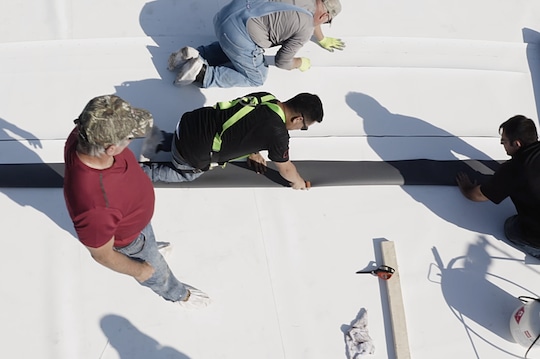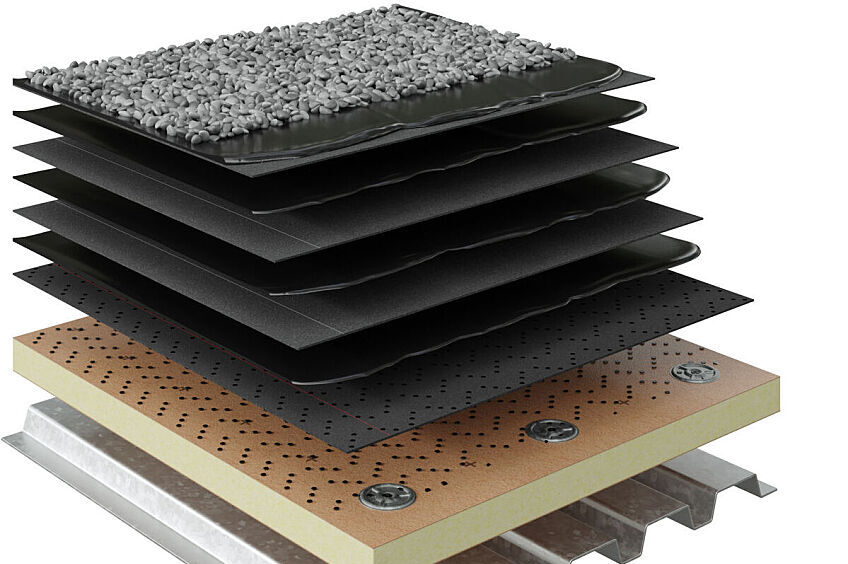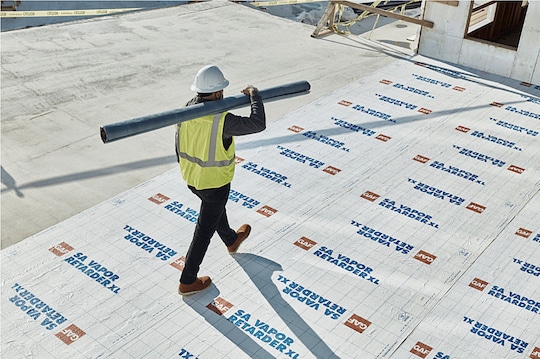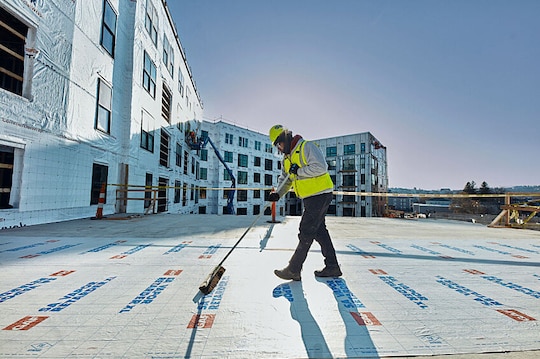
A built up roof system is a popular choice for buildings with low-slope or flat roofs. Often referred to by the acronym BUR, this system has been used for 100-plus years in the U.S.
What makes BUR systems so popular? They are known for providing excellent protection due to their redundant nature because they are made up of multiple layers of ply sheets and asphalt. These layers are then topped off by a cap sheet or a flood coat of asphalt and granules. The multiple plies provide resistance to weather and heavy-duty protection for the building.
Components of a Built Up Roof System
Built up roof systems can be constructed in a variety of ways. Often, the built up roof system starts with a base sheet installed over the polyisocyanurate (polyiso) insulation or cover board, typically through the use of mechanical fasteners. The base sheet serves as the bottom layer of waterproofing protection for the roof system and provides a surface that will allow subsequent sheets to be adhered with hot asphalt.
A layer of asphalt is applied over the base sheet for the installation of reinforcing felt, sometimes called a ply sheet. Many people picture kettles of hot asphalt being mopped onto the base sheet in order to install the ply sheet, but advances in manufacturing have created alternative options. For instance, contractors can choose to use cold-applied adhesive solutions instead of hot mopping asphalt and kettles.
When saturated in asphalt or cold-applied adhesive, the reinforcing felt creates a barrier that provides additional resistance to water intrusion. The process is repeated with the application of asphalt or cold-applied adhesive, followed by the installation of additional plies until the desired number of plies is achieved. The system is then either capped with a mineral-surfaced cap sheet or topped off by covering the top layer with asphalt and spreading gravel or slag.
This video provides an easy-to-understand look at the layers that make up a typical four-ply system.
Benefits of Built Up Roofing
Built up roofing owes its popularity to a number of benefits it provides, including:
- Time-tested technology. It's hard to argue with more than 100 years of history.
- Redundancy. Built up roofs provide many layers of protection, so if the top layer is damaged, the additional layers below will continue to protect the building from water intrusion.
- Guarantees/Warranties. BUR systems may be eligible for guarantees or warranties of up to 20 years, depending on the materials used and the system installed. Check with the manufacturer for guarantee/warraaty requirements and coverage.
- Reflective cap sheets available. White-coated cap sheets are availableto help reflect the sun's rays away from the building, which can help lower internal termperatures.
There are many options when it comes to choosing an asphaltic roofing system, each with different benefits. When choosing your system, the best place to start is by determining the characteristics you want in the roof. You can review this commercial product brochure to see a comparison of the different products, learn about their features, and browse available guarantees. Of course, you can always talk to GAF to help you find the best solution.



